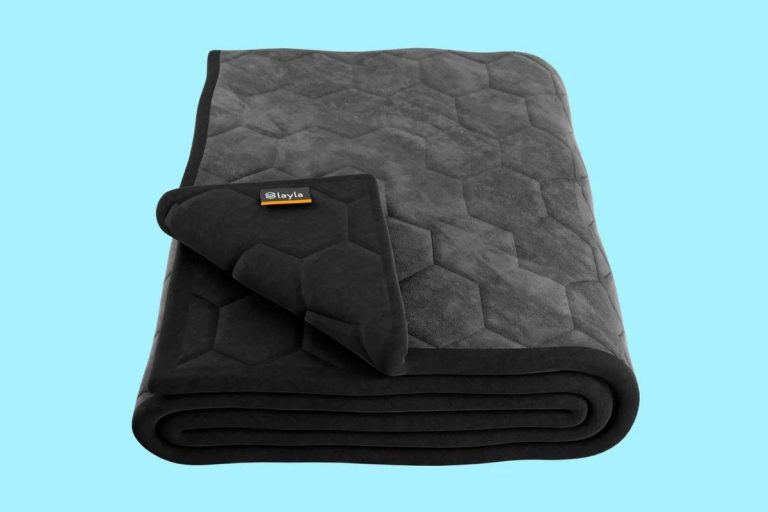“I’m hearing things.”
How do you feel when someone tells you the above sentence? You probably think they’re off their rails. And you wouldn’t be too far off.
Sensing things that aren’t actually there is called hallucinating. Mechanisms that involve our neurons, our brain conjures up things that don’t exist. Since our brain is how we process all information, there’s no proper way for us to know if what we’ve just felt was real or not.
It is important to be aware of the dangers of sleep deprivation and how long can one go without sleep before hallucinating. Sleep deprivation is not only bad for your health but it also increases your risk of other medical issues like diabetes, high blood pressure, obesity, depression, anxiety disorders, etc.
But what if you wanted to hallucinate? Some people are into that sort of stuff. Can you do so without damaging your health?
The quick answer is yes. Sleep deprivation, combined with mental illness or drug use, causes hallucinatory experiences. If you have a healthy mind and body, it’s still possible for your brain will play tricks on you when deprived of sleep for too long without having time to rest.
In this article, we are going to see how our brain produces hallucinations, and why sleep deprivation is a big cause of them.
Read More:
The Hallucinations
Hallucinations can be broken down into five major forms. These include:
Auditory
Most commonly seen in people who claim they are hearing things. The typical example would be someone who is hearing voices, usually because of mental illness. This one is the hardest one to diagnose. It’s very easy to trick our brains into making them believe we’ve heard something.
Have you ever been in public and felt like someone called you, only to turn and realize it didn’t happen? These are most common that you think. These are also not hallucinations.
Real auditory hallucinations are way more convoluted than that. And it’s also hard to distinguish between your brain’s inner monologue and true auditory hallucinations.
Visual
The most common hallucination seen in people who lack sleep and are experiencing hallucinations would definitely include this form. Often it can take the shape of bright lights or shadows moving around you (especially if you’re in a dark room).
Perhaps the most common misconception is that mirages are hallucinations. Mirages happen when you see something that exists, but in the wrong location. Hallucinating is seeing things that don’t exist. It’s a subtle difference for real-world objects, but it’s there.
Tactile
An example of this would be when you feel bugs crawling on your skin even though no bug is actually touching you. This can also result in people who are sleep deprived claiming they’re being held down or pushed by an unseen force, often resulting in sleep paralysis.
Olfactory
This one makes sense, because our nose is the only organ in the human body that truly functions when we are sleeping or otherwise unconscious. So, if your brain thinks you’re being smothered to death, it might signal your nose saying “smells funny” even though nothing smells at all.
Gustatory
This only happens when you have a dry mouth from lack of water or if someone has slipped drugs into your drink without your noticing. It’s extremely rare, and you will not feel this 99% of the times.
Hallucination is a complex process that involves many parts of our brain. It starts with the occipital lobe, which processes vision in your brain. This information then travels to the parietal lobe, which helps you understand where objects are and what they look like.
So, for example, when visual hallucinations occur, what you’re experiencing isn’t real. It’s a sensory information that is being processed in your brain incorrectly. That is because when the two lobes communicate, they don’t produce a picture or image of reality correctly and this can cause people to see things which aren’t there, like a hallucination.
The same goes for the other 4 types of hallucinations. Your brain is making up sensory inputs from your senses and making you feel them. Even if they don’t actually exist.
Why Does Sleep Deprivation Cause Hallucinations?
This is actually quite simple. When your sleep deprived, your brain tries to make up for losing hours by increasing its time in the Rapid Eye Movement (REM) stage which involves more dreaming.
During REM, our brains are very active and highly suggestible because we are entering an alpha state of mind. When you combine the sleep deprivation with this brain activity, your hallucinations can become vivid and real because your brain is trying to make up for lost time by creating images it thinks should be there.
Usually, when people hallucinate due to lack of sleep, they see and hearing things that aren’t there.
If you’re hallucinating due to lack of sleep, the best thing to do is just get some rest in a dark room because your brain will eventually stop trying to make up for lost time by creating images from nothing.
Other Causes of Hallucination
Aside from drugs—which we will discuss later—mental illnesses are a big factor of hallucinations.
Specifically, those who have schizophrenia and psychosis are more likely to experience hallucinations.
Schizophrenia is a disorder that causes people to see things which aren’t there as well as to hear voices in their heads.
Psychosis takes this one step further where it can cause delusions or false beliefs like paranoia and anxiety about what others think.
Drug use can also cause hallucinations. Drugs like LSD and THC, which are used for recreational purposes, often make people see things that aren’t there, but they don’t last long in the system of a regular user with no mental illness or problems sleeping.
In more extreme cases, where drug users have been using drugs every day without sleep, research shows they can hallucinate in a way which is like how it affects people with mental illnesses.
How Long Can One Go Without Sleep Before Hallucinations Occur?
There is no definitive answer to this question because it varies from person to person.
Some people can go a few days without sleep and not hallucinate, while others might see images after 20 hours of being awake, which will only stop when they get some rest or take drugs. As long as you don’t push yourself too hard, you should be fine.
There are many studies which show that most people can hallucinate after being awake for 24-72 hours.
However, the exact time to see hallucinations due to lack of sleep will vary from person to person depending on their brain activity, how tired they feel, and what drugs they have taken.
Anything that messes with the brain’s chemistry can cause hallucinations. Drugs are a typical example. There are drugs whose entire purpose is causing hallucinations (think mushrooms and LSD).
But other drugs can also cause them when combined with sleep deprivation. For example, alcohol and cocaine mess with the brain’s chemistry. But you’re more likely to enter a coma because of internal organs failure than hallucinate. Unless you are combining them with sleep deprivation and not exaggerating with your intake.
Self-Induced Hallucinations
If you’re trying to hallucinate to know what it feels like, you’re in luck. Or well, it depends on how you’re going to approach it.
There are 2 major ways to hallucinate yourself.
One of them is what we’ve been talking about so far. Don’t sleep for ~24 hours and add some drugs to the mix (keep it legal though!). You’ll start seeing things.
While the above method works, it’s dangerous for your health. Sleep is the most important activity we perform in our life. We don’t want to skip it. Let alone take drugs for a sensory overload experience.
Since hallucinations are created inside our brains, you can trick your brain into creating them. Without ingesting potentially harmful substances such as drugs.
You can hallucinate yourself with common household items:
- Print paper
- Rubber band
- Noise canceling headphones playing static noise
- Strong white light
By creating a sleeping mask on your face with the paper and rubber band, and playing static noise into your ears, you send your brain into “hallucination mode”. Here’s a video that shows how to recreate the experiment yourself, and what you might expect from it:
Why does this work?
It’s because of the Ganzfeld effect. Basically, you force your brain to not feel any sensory input from your eyes + ears. This makes the brain panic and looks harder for clues to make sure it’s still functioning.
Thus, the brain goes hard into looking for sensory inputs when they don’t exist, causing hallucinations.
What you will feel is the same as if you were to hallucinate because of sleep deprivation. Minus the sleep deprivation part. It’s way more comfortable, and you’ll still be in control.
Conclusions
Hallucinations are the “gateway” to perceiving things that are not really there.
They can be caused by sleep deprivation, drugs or random sensory overload of the brain. While they feel real at first, you will eventually get used to them and learn how to control your brain’s actions on what it should perceive as reality. You can also induce hallucinations on yourself by using the Ganzfeld effect.
However, please keep in mind that hallucinations are not something you should take lightly if you decide to play around with them on your own (playing around is different than self-induced experiment like we’ve seen above). You don’t know what kinds of effects they might have on your brain functions and mental stability. If you’re already having sleep deprivation issues, please seek medical help to handle them before they cause serious damage.
We’ve covered how long it takes for hallucinations to kick in when people are deprived of sleep, the science behind why this is happening and how we can use our own brain as a hallucination machine.
As always, we recommend consulting a physician if sleep deprivation is taking a toll on your brain. And while it’s ok to experiment with hallucinations once or twice, you don’t want it to become a habit.
Also Read:





